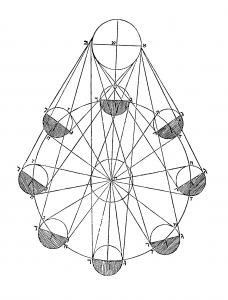Isaac Israeli ‘Yesod Olam’
‘Yesod Olam’ was composed in 1310 by the Toledan polymath Isaac Israeli, at the behest of his teacher, the renowned Rabbi Asher ben Yehiel.
It is an encyclopaedic, scientific treatise in Hebrew embracing Euclidean geometry, spherical trigonometry, and astronomy, followed by a detailed presentation of the Jewish calendar and how it is reckoned. This work was very popular in the late medieval and early modern periods, as more than 50 manuscripts of it have survived, and several commentaries were written on it.
Our researchers in this area are Dr Ilana Wartenberg and Dr Israel Sandman.
Our aim is to produce a modern edition of the text, with translation and commentary. Our critical edition will endeavour to recover the original author’s text and to trace the work’s transmission in the following centuries. We are interested, for example, in how the text was augmented or modified in the course of its transmission. Towards that end, we are consulting all known manuscripts. This will be first modern edition of the text; earlier editions were printed in 1777 and 1848, but with no critical apparatus, no variant readings, and no indication of what manuscripts they were based on.
Our English translation will be the first of ‘Yesod Olam’ into any language, making the work available to those who do not read Hebrew, as well as elucidating passages that would remain obscure even to the Hebrew reader. We will also provide a commentary, explaining difficult terms and passages and discussing points of particular or general interest.
Our main research questions are:
1. Why was ‘Yesod Olam’ written? What kind of readership was it aimed at? How was it received, transmitted and diffused?
2. What does ‘Yesod Olam’ tell us about scientific knowledge in late medieval Jewish society?
3. What was the impact of ‘Yesod Olam’ on the development of the Jewish calendar, its standardization, and its fixation?
 Close
Close


